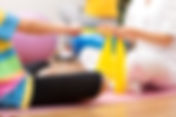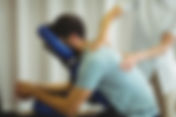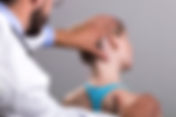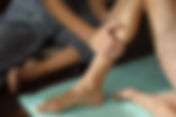10 results found with an empty search
- Sport injuries and return to play
Unfortunately, one of the downsides of sport is a sports injury. Fortunately, sports injury occurs relatively infrequently, so the health and psychological benefits of participating in sport far outweigh the potential temporary downside of a sports injury. Luckily, medical care continues to improve every year. Health professionals, such as your sports physio or sports physician, deal with the day-to-day management of sports injury and are highly qualified in the field of sports injury management. If you wish to assess, accurately diagnose and optimally manage your sports injury in the shortest possible time, then you should seek the advice of your sports injury physiotherapist. Sports Injuries: Acute Sports Injury Clinic AFL Baseball Basketball Boxing Cricket Cycling Dance Football Golf Gymnastics Hockey Horse Riding Martial Arts Netball Rock climbing Rowing Rugby League Rugby Union Running Skateboarding Skating Snow Skiing Soccer Softball Swimming Squash Tennis Touch Football Track & Field Triathlon TRL Volleyball Water Skiing Waterpolo Weightlifting Youth Injuries There are well over 20 different treatment approaches commonly used by your physiotherapist. Hands-on Physiotherapy Techniques: Your physiotherapist may be trained in hands-on physiotherapy techniques such as: Joint mobilisation (gentle gliding) techniques, Joint manipulation, Physiotherapy Instrument Mobilisation (PIM). Minimal Energy Techniques (METs), Muscle stretching, Neurodynamics, Massage and soft tissue techniques.
- Electrotherapy
Electrotherapy machines are a popular modality used in physical therapy and rehabilitation. Electrotherapy (also known as electrical muscle stimulation or e-stim) uses an electrical machine that delivers electrical impulses to a patient’s body. This stimulation is done in order to promote and facilitate muscle healing and tissue regeneration. Not only is electrotherapy a popular modality in physical therapy, but can also be used by other rehabilitation practitioners because it has several numerous therapeutic benefits. The use of electrotherapy has been supported by the American Physical Therapy Association because it has shown to provide the following: Relaxation of muscle spasms Prevention and cessation of muscular atrophy due to disuse Improved local blood circulation and flow Re-education of muscles using targeted stimulation Preserve and improve range of motion Management and reduction of pain (chronic, post-traumatic, and post-surgical acute) Prevention of deep vein thrombosis post-surgery Facilitation of wound healing Improvement in the effectiveness in delivering prescription drugs-electromotive drug administration (EMDA)
- Massage and soft tissue manipulation
Soft Tissue Therapy The benefits of sports massage are well documented and play an important role for anyone involved in strenuous activity, whether through sport, occupation or otherwise. Regular sports massage has the following effects on the body: • Increased mobility and flexibility of muscle tissue • Increased feeling of well-being • Relief from tension and stress • Correction of muscular imbalances • Decreased risk of injury Sports Massage is one form of Soft tissue therapy. Soft Tissue Therapy is the manipulation of the soft tissues of the body i.e. muscles, connective tissue/fascia, tendons, ligaments and joints. Soft tissue therapy helps alleviate the soft tissue discomfort associated with everyday and occupational stresses, muscular over-use and many chronic pain conditions. If employed early enough after accidents involving trauma and injury, soft tissue therapy can greatly reduce the development of painful muscular patterning. Your body is made up of 70% soft tissue. We specialise in injuries whether they are the result of everyday activities or from competing (at any level). Clinical reasoning and excellent palpation skills allow us to hone in on the problem area and have you well on the way to recovery in your first session. At times the treatment can be tender due to the therapist needing to work through the superficial tissues into the deeper structures to locate the underlying cause of the pain or tension. Soft tissue therapy can both maintain and develop your bodies performance.
- Orthopedic Rehabilitation
Orthopedic Rehabilitation Individuals who have undergone joint replacement, experienced a musculoskeletal injury, sustained bone trauma or have been diagnosed with a degenerative joint disease often have limited function and mobility, pain and other complications. Our Approach Studies show that where an individual goes for treatment can make all the difference in his or her recovery. Research also indicates that an early start to rehabilitation can optimize functional gains. Skypro medical specialized acute rehabilitation Center, is able to provide that early start and deliver a comprehensive orthopedic rehabilitation program that includes therapy care to best meet the needs of each patient. Our goal-directed approach to orthopedic and musculoskeletal rehabilitation tailors treatment to help patients: Restore physical function and enhance the skills needed to perform daily activities Build strength and endurance Improve balance and regain mobility Optimize independence
- Musculoskeletal Rehabilitation
"A Unique Service" - The service provides a qualified therapist who will integrate latest rehabilitation approach and specialist in to clinical and home environments, which offers up to date research maintained levels of practice that are technologically advanced. The functions of the Musculature services treats injuries and assists with injury recovery. Our aim is to help those who are injured to return to full fitness. We focus on the understanding on how the injury occurred, as we deal with the effects of physical and emotional traumas caused by musculature conditions. Typical work activities upon a clients arrival into the suite for treatment consists of the following: Patient Consultation. Conduction of a assessment of the clients injury condition. Testing joints for ease and range of movement. Strapping, taping, offering massage and preparing patients to return back to normal daily functions physically and mentally. Assess and examine injuries and determine whether patients can continue daily functions or take part in physical activity. Assess and examine injuries caused through trauma e.g, cuts, bruises and blisters. Specialist Services. Treatment of injuries, alleviating pain, mobilising injuries and giving various types of advanced massage techniques. Rehabilitation of injuries with the use of manual therapy techniques, apparatus and electrotherapy. Designing and monitoring rehabilitation programmes which are appropriate to injury recovery. Decide whether the patient / client requires additional treatments and co-ordinate referrals to other medical practitioners. Advise patients / clients on dietary and nutritional issues. Work with patients / clients by implementing fitness exercises, conditioning, core stability and injury prevention programmes. Liaise with other health professionals in either the sports sector or mainstream medicine.
- Neurological & Vestibular rehabilitation
For most of us, feeling dizzy or off balance only happens when we’ve overindulged in our favorite drink. But for those with Vestibular Disorders, these symptoms can be a frequent, often debilitating, occurrence. As many as 35% of Americans over 40 have experienced some form of vestibular dysfunction 80% of Americans over age 65 have experienced fall. What is the Vestibular System? Your vestibular system is composed of three canals and two sacs filled with fluid. The fluid shifts when you turn your head or change positions and stimulates hair cell receptors to tell the brain what’s happening. The brain then uses this information to maintain balance and help the eyes stay focused. Problems in the vestibular system can be caused by how/when the receptors fire or by problems with the nerves that transmit this message to the brain Who Can Benefit from Vestibular Therapy? At Skypro Physical Therapy, we treat a variety of Vestibular Disorders that can make you feel dizzy or off balance, affecting the quality of your everyday life. Conditions treated may include: Dizziness or Vertigo General balance deficits Benign Paroxysmal Positional Vertigo (BPPV) Meniere’s disease Concussion/post-concussion syndrome Post-stroke balance programs Lateropulsion Unilateral & bilateral vestibular hypofunction Cerebellar degeneration and age-related multisensory deficits Neurological and Vestibular rehabilitation For most of us, feeling dizzy or off balance only happens when we’ve overindulged in our favorite drink. But for those with Vestibular Disorders, these symptoms can be a frequent, often debilitating, occurrence. As many as 35% of Americans over 40 have experienced some form of vestibular dysfunction 80% of Americans over age 65 have experienced loss of balance. What is the Vestibular System? Your vestibular system is composed of three canals and two sacs filled with fluid. The fluid shifts when you turn your head or change positions and stimulates hair cell receptors to tell the brain what’s happening. The brain then uses this information to maintain balance and help the eyes stay focused. Problems in the vestibular system can be caused by how/when the receptors fire or by problems with the nerves that transmit this message to the brain. Who Can Benefit from Vestibular Therapy? At Skypro Physical Therapy, we treat a variety of Vestibular Disorders that can make you feel off balance.
- INITIAL CONSULTATION
Initial consultation is a stage to collect medical information such as X-ray, blood test, MRT and any other diagnostic and radio diagnostic information beside of our assessment approaches to pin point your issue and develop a treatment plan for your need!
- Post-surgical rehabilitation
The road to recovery doesn’t have to wait until after surgery. In fact, two aspects of the surgical experience critical to achieving a successful recovery are pre- and post-operative rehabilitation. Pre-Operative Rehabilitation Most of us are familiar with a comprehensive post-operative rehabilitation program designed to promote healing, reduce pain and swelling, restore joint mobility, flexibility and strength. However, many of us are not aware of the benefits of a structured pre-operative or “pre-habilitation” program. This is a program designed by your physical therapists to help you prior to surgery so that you can have a great outcome after surgery. The goals of a pre-habilitation program: Mentally prepare for surgery Reduce pain and inflammation Restore range of motion Improving muscular control of the injured joint Normalizing movement patterns prior to your surgery Improved overall well-being and fitness Gain a good understanding of the exercises that you will perform immediately after surgery Post-Operative Rehabilitation Physical therapy is typically indicated following an orthopedic surgery such as operations on the hip, knee, shoulder, wrist, hand, neck, foot, ankle, and spine to facilitate a speedy recovery. Physical therapy can start anywhere from a few hours to a few days after surgery and in some cases there may be a period of immobilization following surgery. A patient’s ability to regain motion and strength and ultimately return to their daily activities depend on physical therapy. The body will not regain normal motion without specific retraining. Physical therapists are specifically trained to restore range of motion and strength without compensation and to prevent re-injury during the recovery process. The therapist can also provide the patient with specific guidelines to allow optimal healing. After a thorough evaluation by a physical therapist, goals will be set to minimize the adverse effects of surgery such as pain and swelling as well as to restore normal movement, flexibility and function. The therapist and patient will work together to establish functional goals related to resuming normal activities of living as well as preventing an injury from recurring. The therapist will then design an exercise program tailored specific to the patient’s needs and abilities, and work. Therapy is often divided into distinct phases. The first comes immediately after surgery when the body part may be immobilized while pain and s
- Dermatology and anti-Aging
Physical Rehabilitation in dermatological problems to use natural sunlight potential and high-frequency electromagnetic currents for it's therapeutic effects on an array of skin conditions. Also, physical exercise in combination with scientific approved supplements, diet and life style is proposed as a highly effective means of treating and preventing the main causes of morbidity and mortality in industrial countries which are associated with aging. Low physical fitness is an important risk factor for cardiovascular and physiological morbidity and mortality. Physical rehabilitation in dermatological problems uses the ultraviolet band B light which it has been identified as the optimal wavelength for treating psoriasis and a host of other skin conditions. Photo therapy, also known as light therapy, differs from natural sunlight in that it uses a concentrated dose of UV light within the narrow therapeutic light spectrum. This minimizes the risks of sunburn and skin cancer inherent in natural sunlight. Narrow band UVB (NB-UVB) phototherapy has had significant success in reducing visible symptoms for the many conditions, including: Psoriasis Vitiligo Atopic dermatitis Leukoderma Hand dermatitis Alopecia areata Lichen planus Hypersensitivity and/or allergic reactions
- Rheumatological Rehabilitation
Improved medical treatment of rheumatic diseases prevents major functional limitations for many patients. However, adjusting to living with a chronic rheumatic disease may still be a complex and demanding process involving behavioural, cognitive and emotional aspects. From the early onset of the illness, multidisciplinary rehabilitation is a valuable adjunct to medical treatment in this process. Multidisciplinary rehabilitation in the context of a biopsychosocial model of illness has been shown to be beneficial for patients with rheumatic diseases. However, research also shows that rehabilitation outcomes tend to be short lived. After 6–12 months, most patients are back to their initial health status. This draws attention to the nature of rehabilitation outcomes and to factors and interventions that may help to increase the duration of positive outcomes. Rehabilitation in rheumatology: In the twenty first century the public health perspective of promoting physical activity for improving the quality of life, function, and participation of patients is embraced. Research focus is on investigating the impact of weight Total/Local body rest. Bed rest is practical but should not be applied for more than four days especially in the elderly. Manual therapy Massage Rehabilitation modalities in rheumatology Exercise therapy Range of motion (RoM) and flexibility exercises Help preserve joint movements and are passive when performed by the physiotherapist or active when there’s patient involvement. Isometric /static exercises: Muscle contractions here are achieved without joint movement and lengthening or shortening of muscle fibers; they can be generated with the help of a fixed object like the hand of the therapist, a belt, small ball or elastic band. Isometric exercises increase strength and resistance and are easy and safe to be performed by patients with inflammatory arthritis. Isotonic /dynamic exercises–involve changes in the muscle fiber length through their lengthening (essentric) or shortening (concentric); nearby joints move through full RoM. Aerobic conditioning / strengthening exercises : moderate intensity exercises are effective (70-80% max heart rate) and include walking, running, cycling, swimming and stair climbing. Aquatic exercises Bearing activities of various intensities on joint integrity in light of radiological advancements and advent of modern biologic therapies.
_edited.png)









